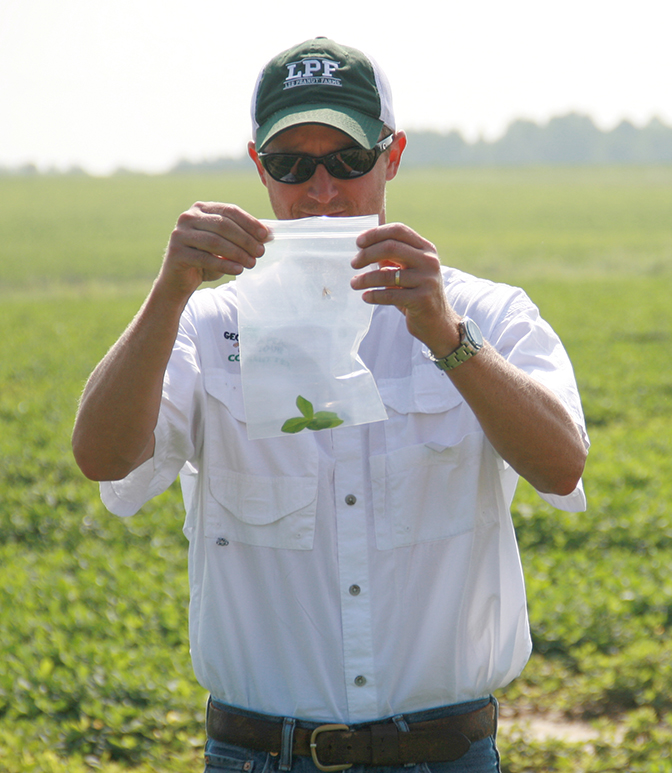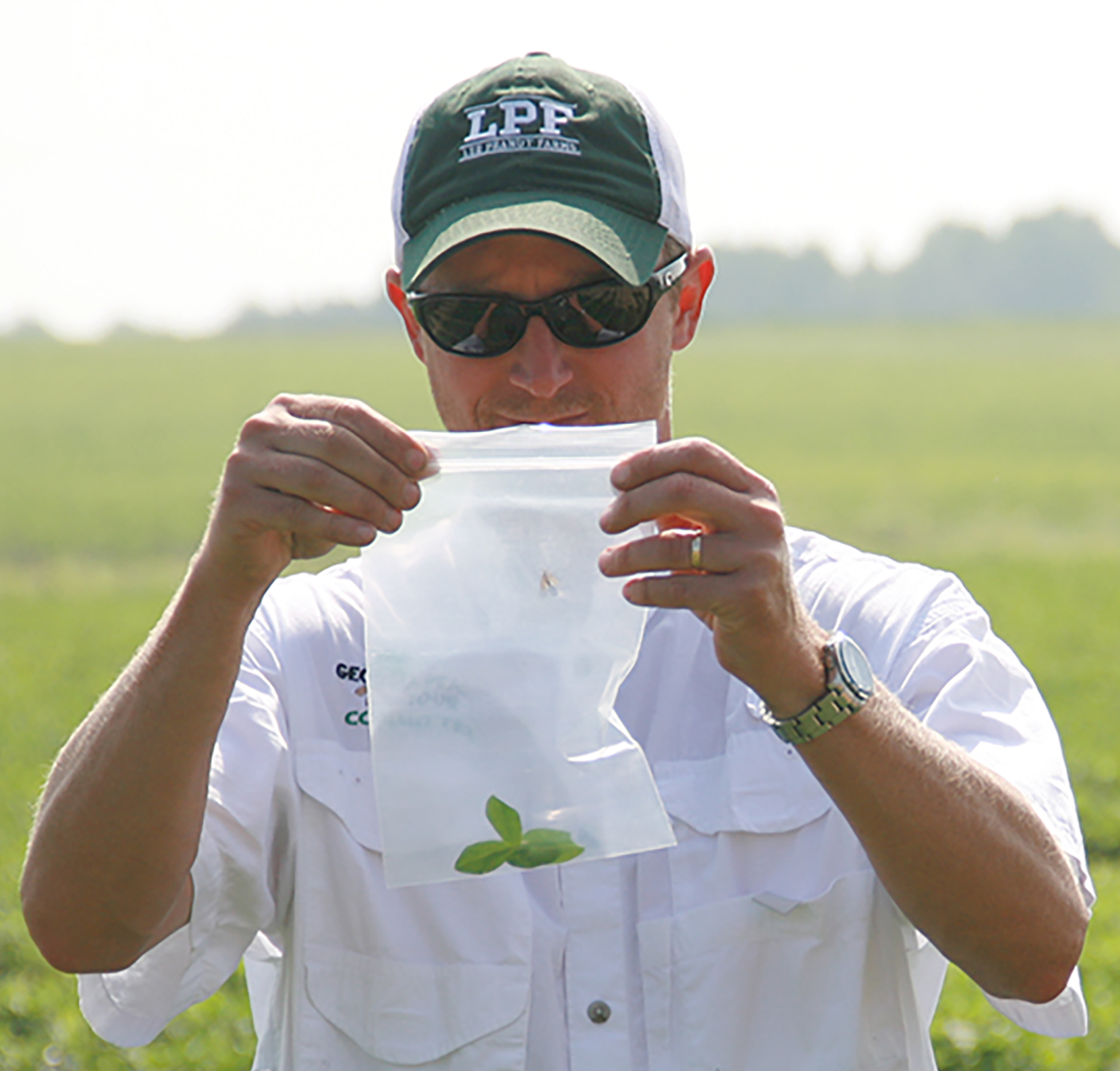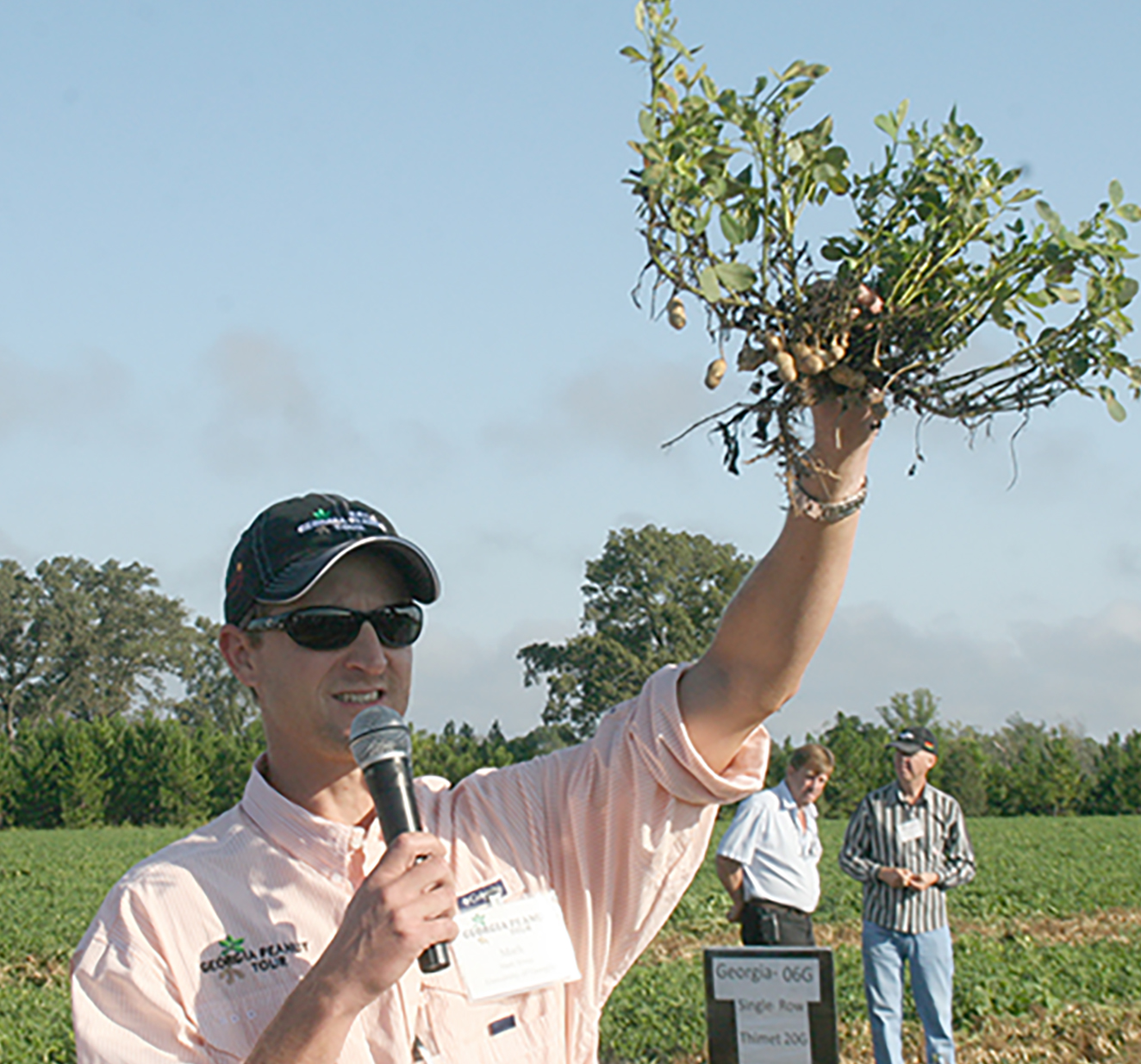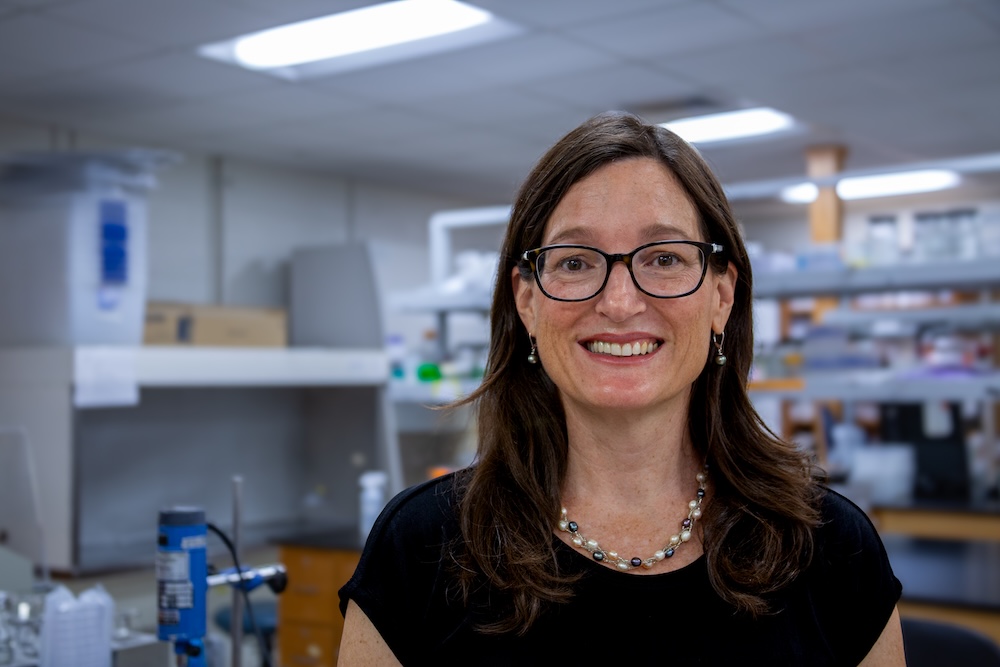University of Georgia entomologist Mark Abney is searching for ways to monitor insects responsible for destroying Georgia peanut crops. This is the first step in developing economic thresholds that will indicate to farmers when it’s time to apply controls for each pest and when it’s time to cut losses.
Currently, Abney and his team are focusing on the threecornered alfalfa hopper, but they also hope to establish thresholds for the burrower bug and the twospotted spider mite in the distant future. For each, they hope to develop an economic threshold, or a point when the insect population reaches a level at which farmers should take action to prevent the pest population from affecting their profit margin.
“All of these insects could have a significant impact on peanut production in Georgia,” Abney said. “Finding a threshold for the threecornered alfalfa hopper is important because it’s a pest Georgia farmers have to contend with every year. We need to do more research to understand the biology of the burrower bug before we can begin to think about establishing economic thresholds.”
Having a set threshold would provide farmers with information about when to treat their crops to ensure that insecticide applications are most effective.
Even though a threshold doesn’t exist for all peanut pests, there are options that farmers can use to save money when it comes to pest management, Abney said.
“Farmers don’t have to treat for insects in every field every year,” Abney said. “That’s why scouting is so important. Growers who have good scouts can save themselves money.”
When insecticides are applied, there is the potential that beneficial insects will be killed. Spraying these costly insecticides when pests are absent or present at low levels wastes farmers’ money, according to Abney. He added that unnecessary application of insecticides can be bad for the environment and can lead to secondary pest outbreaks.
The most economically damaging peanut pests thrive in dry, hot environments. “Unfortunately, there are few effective chemical controls for the burrower bug or twospotted spider mite,” said Abney.
The damage these insects inflict on peanut crops is different, but results are similar: reduced peanut yield and quality. The burrower bug uses its needle-like mouthparts to suck juices directly from the developing kernels inside the peanut pod.
“These direct pests are very damaging because they feed directly on the peanut pod, and every pod a pest feeds on is one less peanut the grower has to harvest,” said Abney.
The threecornered alfalfa hopper sucks juices from the stem of peanut plants, while twospotted spider mites suck the juices out of a peanut leaf, which turns the leaves yellow or even black.
For the past two years, Abney and his UGA team have researched the alfalfa hopper. Abney admits that it’s hard to predict when a threshold will be available for growers.
“It depends on how the research goes,” he said. “It can take years before you have enough data to feel comfortable publishing an economic threshold.”
According to the UGA Center for Agribusiness and Economic Development, the farm gate value for Georgia peanuts in 2014 was $563.9 million.
(Kenzie Kesselring is an intern with the UGA Tifton Campus.)









